The average software startup faces a mountain of challenges in their first few months, such as getting funding and establishing a stream of revenue, hiring top talent, and distinguishing their fledgling product from competitors. Early stage startups usually comprise a lean but hard-working team dedicated to building out their product — and often, creating opportunities to talk to their users can fall lower on their list of priorities at a time when urgent bugs and funding issues are commonplace. But collecting feedback from customers can lead to valuable insights and significant growth opportunities. Read on to learn how your startup can start better understanding your customers, develop a customer feedback management system and feedback loop, identify new opportunities for growth and customer acquisition, improve user experience, and build a loyal customer base.
- Feedback helps startup teams better understand customer needs and preferences.
- Customer feedback enables startups to refine and enhance their products.
- Collecting and addressing customer feedback builds loyalty and increases retention.
- Customer feedback can help teams identify trends and opportunities.
- Using customer feedback to inform the product roadmap improves the customer experience.
- Prioritizing customer feedback cultivates a customer-centric culture at your startup.
- How to collect and analyze customer feedback quickly and effectively.
Feedback helps startup teams better understand customer needs and preferences.
While tech startup teams usually do quite a bit of research and testing before launching their business, they often lack the full breadth of data they need for effective feedback management to strategize for the future of their product and company. A prototype product that does well with an initial test group, for instance, may not generate enough interest or sales after launch if it lacks a feature deemed necessary for one demographic of prospective customers. Such discrepancies can make for a rocky start to the business.
To address these issues early and head on, startup teams can prioritize collecting feedback from their customers and creating a feedback management strategy. By analyzing the feature requests they receive in the first months after launching a product, the team can gain a better understanding of how their customers are using their product, what pain points are significantly impacting more of their customers, and how specific workflows are panning out in real life. When your team has an idea of what your customers need, you can create a better informed product roadmap that addresses those needs.
To collect feedback that helps your team better understand your customers’ needs and preferences, try:
- Asking for feature requests. Customers’ ideas for improving your product can often point you toward gaps or friction points in your product and show you more clearly how your customers want to be using your product. You can collect feature requests via surveys, phone calls and in-person meetings with customers, or directly within your product interface.
- Using behavior tracking tools. Heatmaps and tools that record how users typically use your product can be invaluable to startup teams. These solutions can help you pinpoint ineffective workflows and bugs by showing you exactly what your customers do with your product.
- Creating a customer advisory board. Most companies do this when they’re already well out of startup territory, but an advisory board doesn’t have to include multiple industries or Fortune 500 companies to give valuable feedback. Gather the champions from a handful of your biggest or most active customers, meet with them regularly, and ask them how you’re doing and how you could do better.
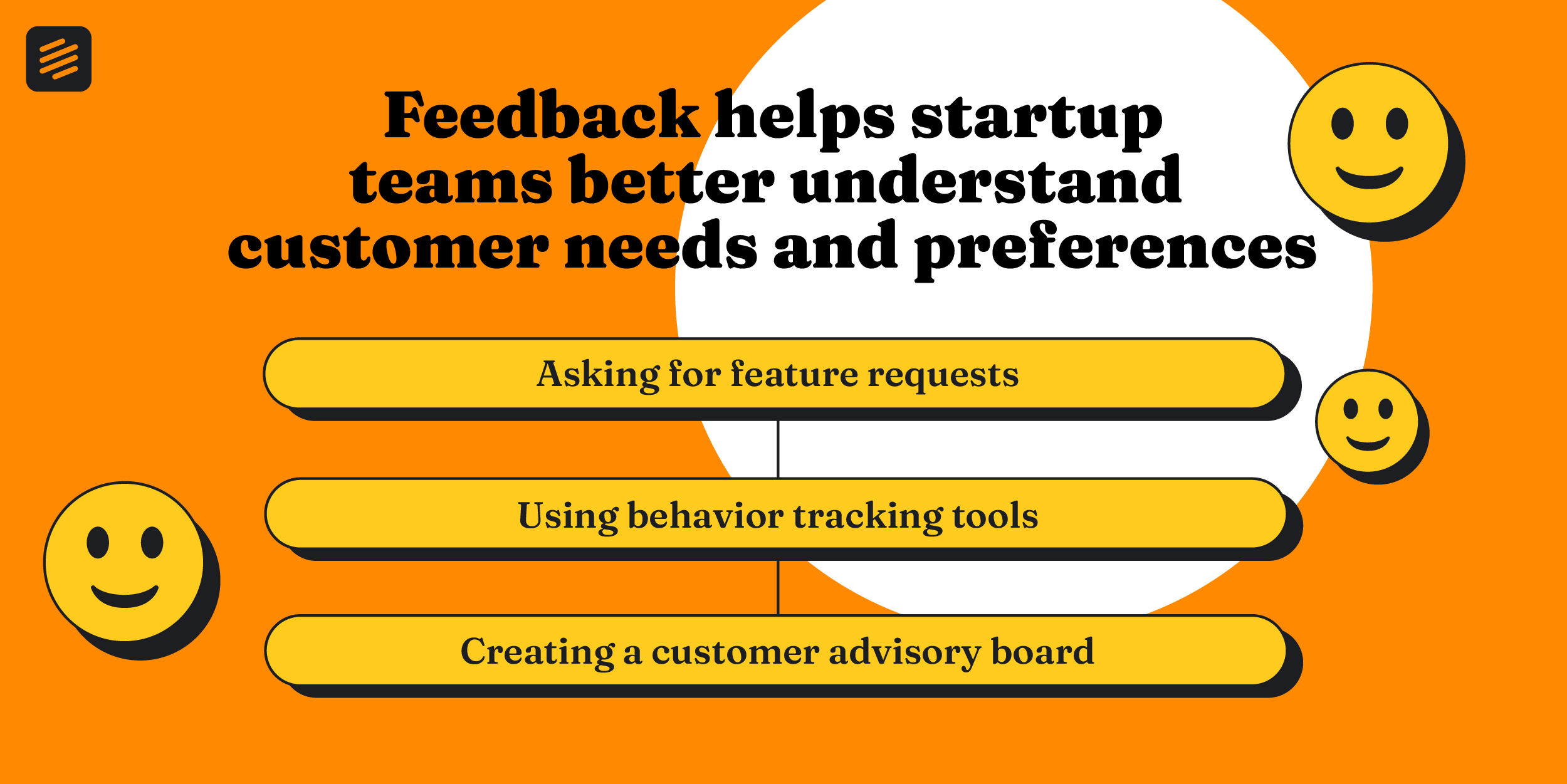
Customer feedback enables startups to refine and enhance their products.
For most software startups, the product they launch with is peanuts compared to what it evolves into a year or two down the road — and this evolution is often key to the startup’s success as a company. Teams can launch their product with a strong development strategy in mind, but unless that strategy is flexible enough to accommodate emerging market trends, inevitable delays and roadblocks, and —most importantly — customer needs, the startup can struggle to grow.
To ensure that your startup is positioned for success in those critical first years, your team will need to prioritize collecting data about:
- The customer journey. Study how each customer begins using your product, what workflows they use most often, and any “hacks” they use to get your product to work better for them. Keeping tabs on how your customers use your software can help you better identify what to change.
- Features and opportunities. Collecting ideas for improving your software from those who use it can point your team towards gaps and opportunities that were previously unknown.
- Bugs and pain points. This is a no-brainer: fixing the things that bother your customers or make it harder for them to use your product will make your product better in the long run.
By collecting and analyzing customer feedback, startups can gather quantitative and qualitative data to inform their product decisions. This data-driven approach allows startups to make more informed, evidence-based choices about product enhancements, feature prioritization, and strategic direction. Over time, this can lead to more successful product iterations and a stronger competitive position in the market.
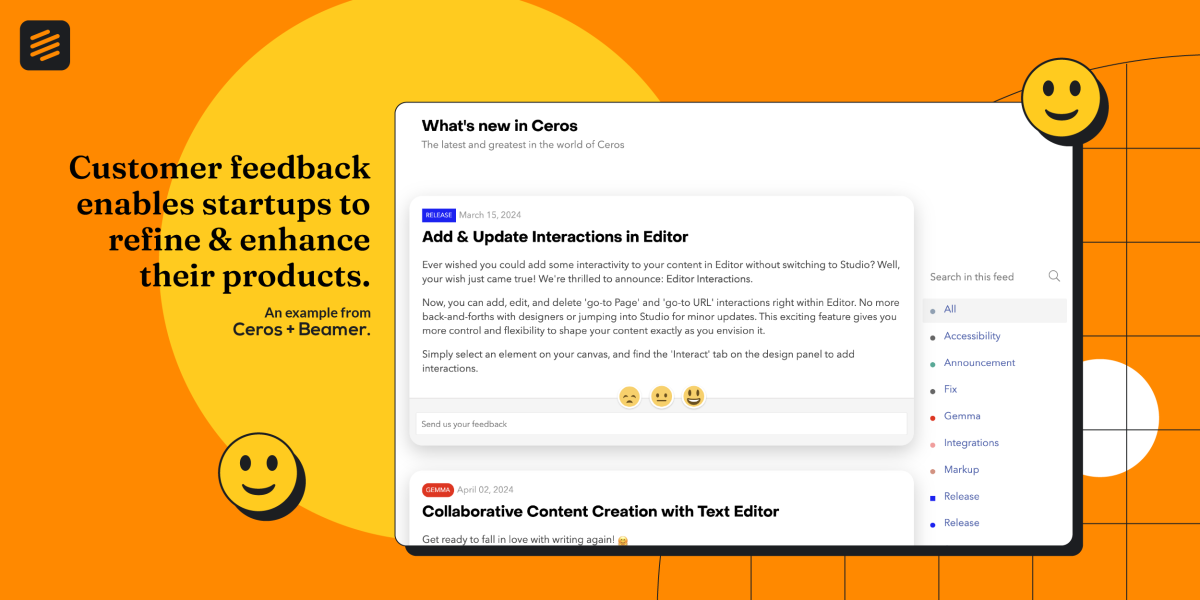
AI startup Ceros enhanced their content editor with features based on customer feedback.
Collecting and addressing customer feedback builds loyalty and increases retention.
According to recent studies, it costs five times as much for companies to acquire new customers than to retain current customers — and increasing customer retention rates usually translate to increased revenue. While many startups have their sights set on acquiring new customers, keeping their current ones happy and active may actually have far more impact on startup success.
Creating a loyal customer base is easier said than done, however. You’ll have to:
- Set up a reliable system for collecting, analyzing, and addressing customer feedback
- Actively solicit and respond to customer feedback to demonstrate your team’s commitment to your users and their evolving needs
- Prioritize your customers’ needs, which can mean occasionally pushing other development projects to fix bugs or add a requested feature
The payoff can be significant, however: with an established customer feedback loop customers who feel heard and valued are more likely to remain loyal, provide ongoing feedback, and become advocates for the brand, further driving growth and adoption.
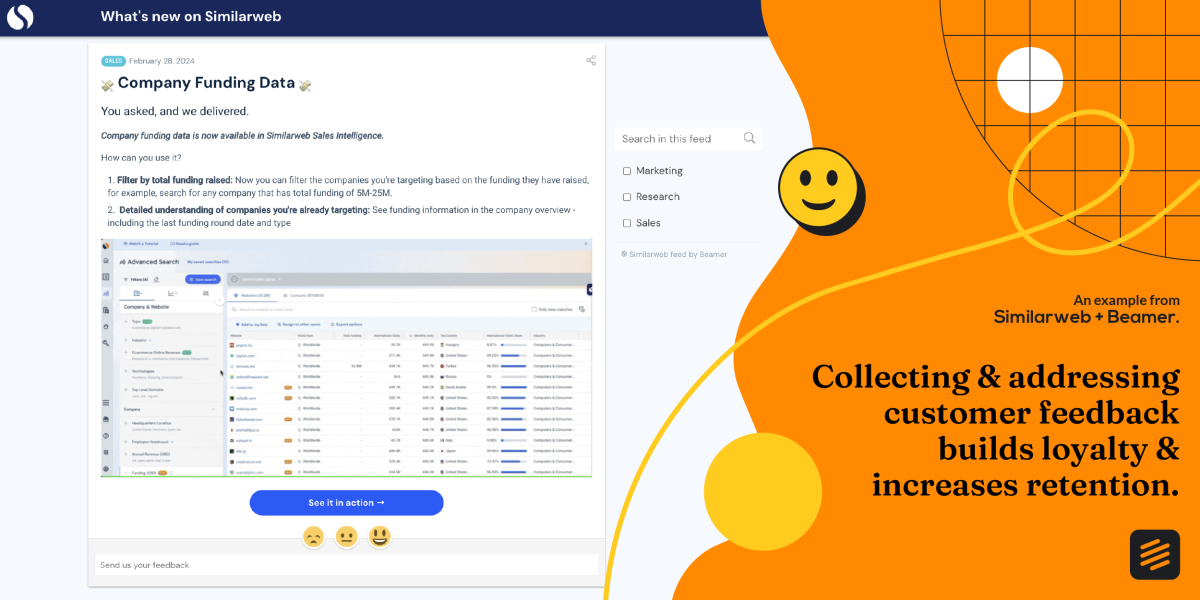
When competitive intelligence platform provider Similarweb began collecting customer feedback, they realized that many of their active users needed to go elsewhere to find funding data. In early 2024, the team added this information to the platform, eliminating the pain point.
Customer feedback can help teams identify trends and opportunities.
When the product team at Pepper Content set out to prioritize customer feedback, their goal was to improve user engagement and establish a customer feedback loop. In addition to achieving that goal, however, the team found benefits they weren’t at all expecting — including an opportunity to unlock an entirely new segment of the market. After setting up Beamer Feedback, the team received many feature requests for custom prompts for Peppertype, the company’s AI-powered platform. The team soon realized that these requested prompts were primarily for other businesses. Today, their new B2B offerings generate over $180K in MRR for the company.
Pepper Content’s story is a prime example of the unexpected and lucrative opportunities that can be unearthed from collecting customer feedback and establishing a customer feedback loop. By actively listening to your users’ requests and suggestions, startups can identify opportunities for product innovation and development, new market segments that can be opened by implementing a new feature, a user demographic that they hadn’t previously marketed to, and much more.

The metrics of Pepper Content’s success
Using customer feedback to inform the product roadmap improves the customer experience.
Offering a quality customer experience is usually key to both winning new customers and keeping your current users happy. For the typical scrappy tech startup, however, this can be a challenge: new bugs and various unexpected issues will inevitably emerge, and once your software gets a reputation among your primary audience for being unreliable, it can be difficult to recover from the blow.
To stay ahead of the tide, it’s key to keep collecting feedback from your customers. The bugs they report, features they request, and their survey answers on user satisfaction can highlight issues and pain points, sometimes before they cause damage to your brand and product image. By setting aside space in your product roadmap for both solutions to user-reported issues and user-requested features, you’ll ensure that your customers’ experience with your product continually improves.
Sharing a public version of your product roadmap that includes requested features and solutions to user-reported issues will also reassure currently unsatisfied users that their experience with the product will soon improve. Simply showing your customers that you’re prioritizing their needs can go a long way to building goodwill with your users.
Prioritizing customer feedback cultivates a customer-centric culture at your startup.
Obsessing about customer success is a winning strategy for software companies. For startups, cultivating a customer-first mindset within the organization can have significant benefits, such as a loyal base of early adopters that generates a reliable stream of revenue, a product roadmap that will appeal to new audiences, and positive word of mouth that steadily attracts new customers.
Prioritizing feedback management and the process of collecting and analyzing customer feedback can help your startup team:
- Better understand your customers. Effective customer feedback management process allows all employees to have access to insights about the real-world challenges, frustrations, and needs of the customer base, this heightened awareness of customers will naturally inform and align the entire team around the user’s point of view.
- Become more flexible to accommodate customer needs. Proactively seeking and acting on customer feedback instills a responsive and adaptive mindset within the startup. Rather than rigidly executing a pre-determined product roadmap, the team becomes attuned to evolving customer requirements and is empowered to make timely adjustments. This agility and customer-centricity can translate into key competitive advantages for your startup.
- Stay accountable for customer success. For customer-centric startups, addressing customer pain points, implementing feedback-driven improvements, and ensuring a consistently great user experience is usually a full-team effort, requiring everyone from engineering to marketing.
- Improve continuously. Prioritizing feedback and creating customer feedback management strategy fosters a mindset of continuous improvement within the startup. The team views customer input not as criticism, but as valuable opportunities to enhance the product and strengthen the company’s relationship with its users. This shared, growth-oriented mindset can cultivate a powerful and driven startup team.
- Foster transparency and open communication. With an established customer feedback management strategy customer insights and experiences are openly shared, discussed, and used to inform decision-making, you can create a transparent, communicative culture that builds trust both internally and externally.
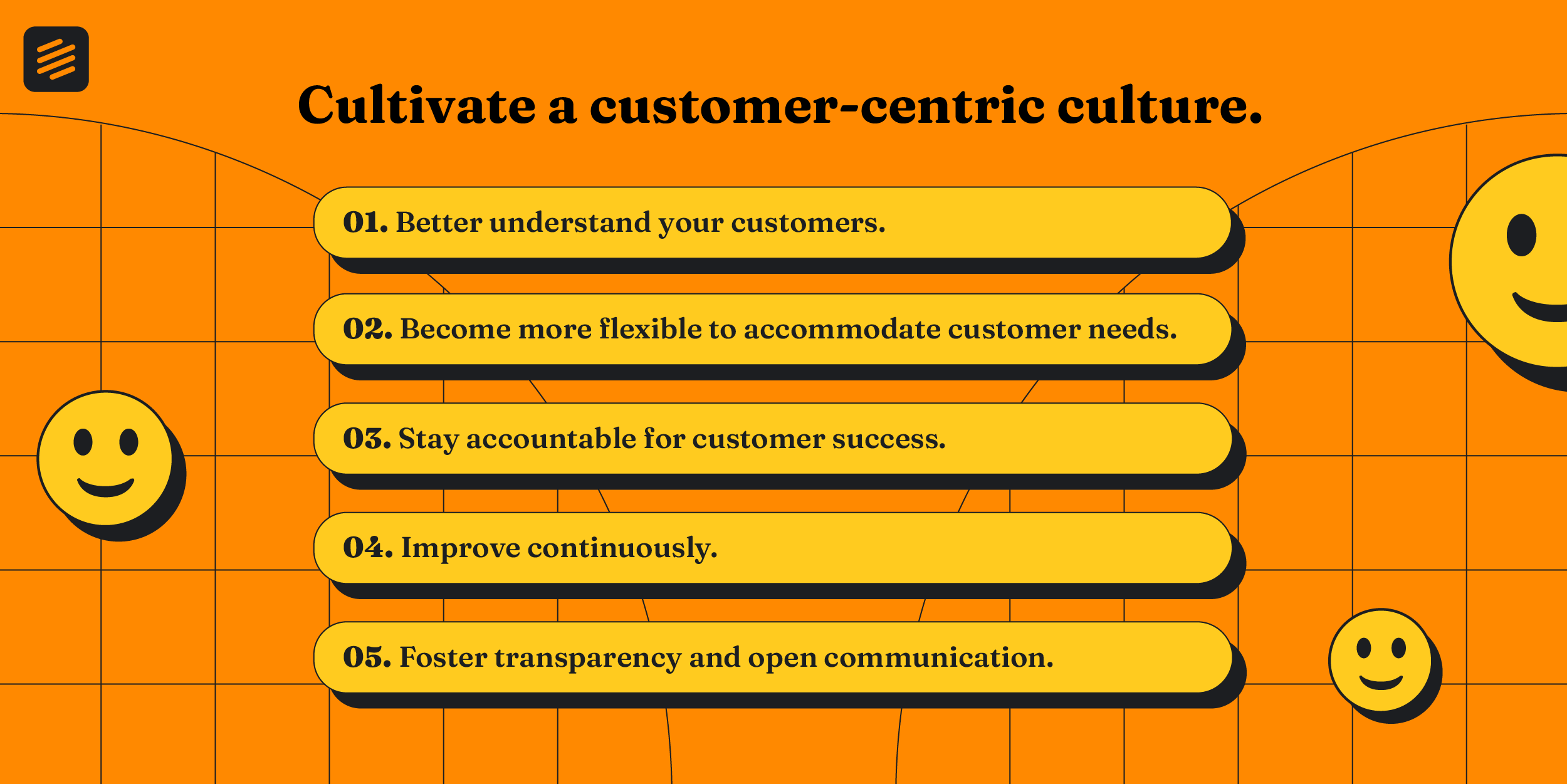
How to collect and analyze customer feedback quickly and effectively.
For many startups, setting up a reliable customer feedback management system for collecting and analyzing customer feedback can be challenging — and expensive to do from scratch. Collecting data from surveys, customer conversations and calls, social media, advisory board meetings, and more can also quickly evolve into an onslaught of information that’s difficult to translate into meaningful insights.
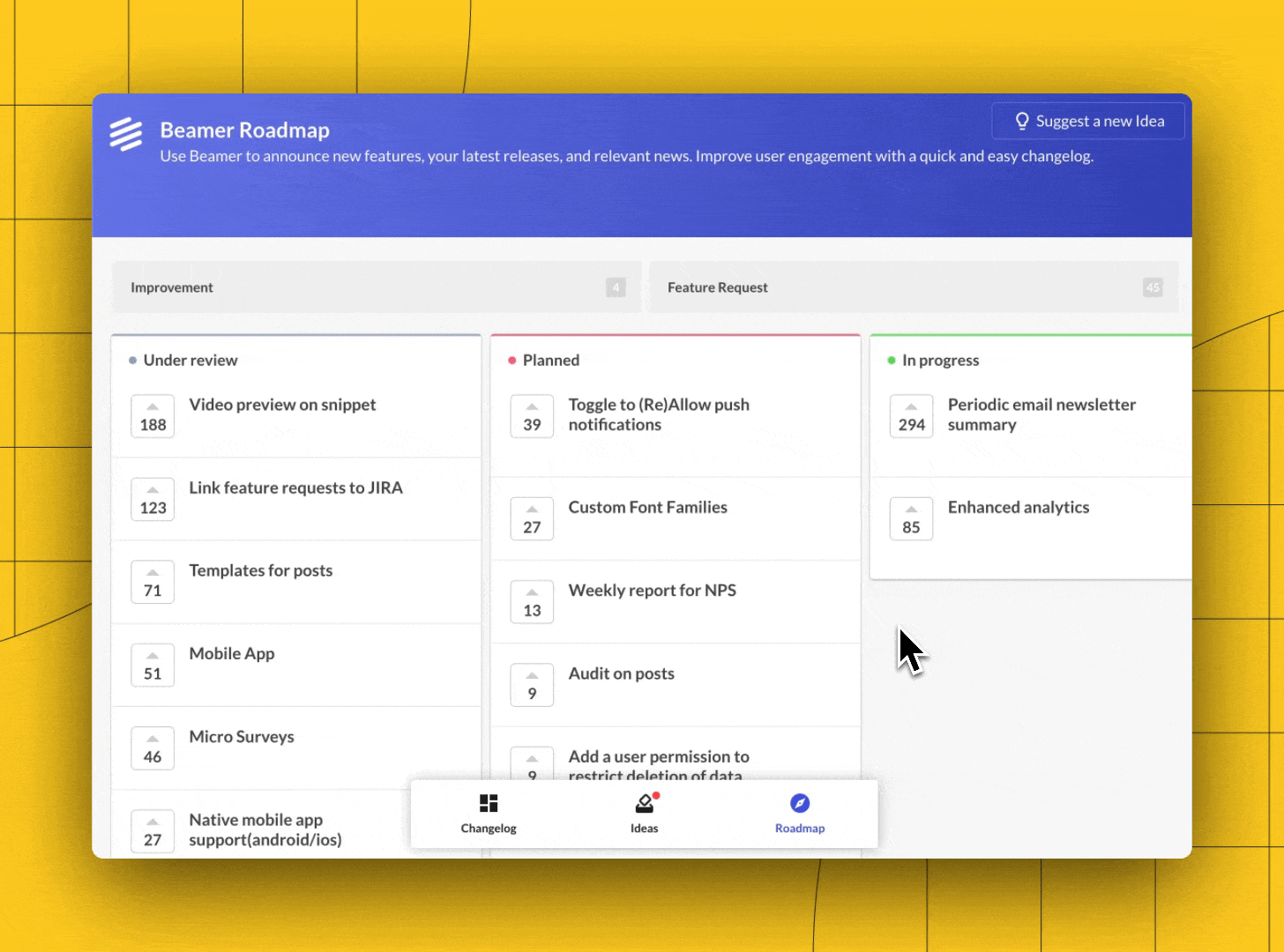
With Beamer, you can easily collect customer feedback, enable users to discuss and vote on feature requests, and close your customer feedback loop with changelogs and roadmaps — all without having your users leave your app. By housing customer feedback collection within your app, you can:
- Keep all your feature requests in one place
- Validate feature ideas early
- Close the customer feedback loop easily
- Share customer feedback across your team and directly to those who need to act on it
- Respond to requests and questions quickly and build trust
To learn more, check out Beamer Feedback.
Check out this article to learn about 6 ways to improve customer engagement and reduce churn.



